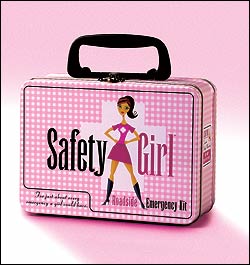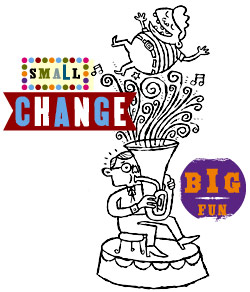Peace of mind: There’s no better gift you could give your loved ones. You may think it’s hard to find it retail, or prohibitively expensive. But it’s easily available on the Web, priced as low as $15.
I’m talking about disaster preparedness kits—a hot, hot seller in this year of Hurricane Katrina, the Kashmir earthquake, and escalating international terrorism. “I had a vendor tell me he’d sold as many kits in the past three months as he had in the previous three years,” reports Eric Holdeman, director of King County’s Office of Emergency Management. And yet even with all the demand, there are scads of them available at the click of your mouse.
The trick is deciding among them. Emergency Preparedness Center’s one-person Tote N Go Survival Kit ($69.95, www.areyouprepared.com) might be sufficient for your ungrateful nephew who never writes you a thank-you note anyway. But for that rich, aging relative who is contemplating his will, Nitro-Pak’s 72-hour Executive Survival Kit with Solar Radio Upgrade ($149.99, www.nitro-pak.com) might better show how much you care. Before you start to shop, you have to narrow down your search. Here’s how:
Choose your disaster scenario
Is your wife the type of gal who’s more likely to get caught in a biological weapons attack or succumb to avian flu? That Chemihood NBC Filter Gas Mask from the Terrorism Safety Alliance ($159, www.terrorismsafetyalliance.org) isn’t going to do her much good if she’s flat on her back with a fever of 107. Think of all the possibilities—lahars, earthquakes, tsunamis, hurricanes, stray comets, and dirty bombs, in addition to bioterrorism and pandemics— before you make your purchase. (How you get to sleep at night afterward is your problem.)
Determine where disaster is likely to strike
Home, office, car, or classroom: Different emergency kits are available for use in different locales. If someone in your family regularly commutes on the Alaskan Way Viaduct, I’d recommend something along the lines of the $15 American Family Ready ToGo Personal Evacuation Kit “for unanticipated emergencies during your daily commute” (www.americanfamilysafety.com). Anything more expensive would ultimately be a waste of money.
Assess how long the disaster might last
The Red Cross recommends that people store whatever they need to survive without help for 72 hours. However, as Hurricane Katrina showed us, if true catastrophe strikes, aid can be delayed four or five days or more—up to a week if you’re poor and/or African American. Plan accordingly.
Get personal
People are all different, but disaster preparedness kits tend to be depressingly uniform: sterile gloves, nutrition bars, plainly wrapped first-aid supplies, a utilitarian flashlight—all stuffed into a gauche red backpack. Most twentysomethings—like my ultra-happening niece who lives in a cool artist’s loft in Fremont—would be mortified to possess one. For her, there’s Safety Girl, a line of emergency items that come packed in a retro, pink-and-black metal valise ($29.95, www.safetygirl.com).
And there are other ways to personalize disaster kits. For instance, if your dad’s mentality is stuck in the Cold War, consider Safety Central’s Radiation Fallout Detection Meter Kit ($39.99, www.safetycentral.com), so he’ll “know when it’s safe to go outside.” (Hopefully, by now he’s forgotten that radiation penetrates solid objects, such as walls.) Or if your mom is the type who likes to make regular trips to the bathroom, you might think about Safe Solutions’ Economy Survival Kit, which comes in a bucket that doubles as a portable potty ($30.95, www.safesolutions.net).
The most personal kits of all are the ones you assemble yourself. These can be simple, attractive (in a nice case or trunk), and actually cheaper than the ones you buy. The Red Cross suggests you include: water (1 gallon per person per day); nonperishable food (with can opener, if necessary); a battery-powered radio and flashlight, both with extra batteries; an extra set of clothes with sturdy shoes; a whistle; a first-aid kit with a three-day supply of prescription drugs; duct tape and plastic sheeting (insert George Bush joke here); a deck of cards; and a moderate amount of cash (always appreciated). (See www.redcross.org and click on Get Prepared for details.)
“I believe in making your own kit because you can put it together for your own circumstances,” says Holdeman. Usually family members know exactly what other family members need: for example, insulin, an extra pair of contacts, or a liter of Jack Daniels. Just remember the basics. “You can live hungry, but you can’t live without water,” Holdeman says.
Holdeman, who was speaking to me by phone from his office, says he has the necessities under his desk—within easy arm’s reach if he has to dive to escape an earthquake. “When they dig me out,” he vows, “I won’t be thirsty.”







